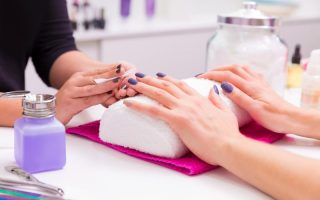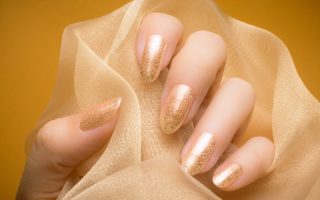Owning a pet brings immense joy, but it also comes with responsibilities, one of which is ensuring proper nail care for both you and your furry companion. Keeping your pet’s nails trimmed and healthy is vital for their comfort and well-being, and it also protects your own nails from potential scratches and damage. This guide will provide detailed insights into maintaining nail health for pet owners, including practical tips and best practices.
Understanding the Importance of Nail Care
For Your Pet
Maintaining healthy nails in pets involves regular trimming, monitoring for signs of infection or injury, and protecting nails from excessive wear and tear. This ensures that your pet remains comfortable and avoids pain or discomfort associated with overgrown or damaged nails. Dr. Jennifer Coates, Veterinary Dermatologist at Cornell University, emphasizes the importance of regular nail care to prevent health issues and improve the quality of life for pets.
For You
Proper nail care is equally essential for pet owners to protect against scratches and maintain overall nail health. By keeping both your and your pet’s nails in good condition, you can prevent injuries and maintain hygiene.
Practical Tips for Pet Nail Care
Regular Trimming
Dr. Barbara Royal, Certified Veterinary Technician and Author, suggests that nail care should be an integral part of your pet’s grooming routine to prevent pain, discomfort, and potential health issues. Here’s how to trim your pet’s nails effectively:
- Gather the Right Tools: Use pet-specific nail clippers or grinders. Avoid using human nail clippers as they can cause splitting.
- Find a Comfortable Position: Ensure your pet is calm and comfortable. You may need to have someone help hold your pet steady.
- Trim Gradually: Trim a small portion of the nail at a time to avoid cutting into the quick, which can cause pain and bleeding.
- Reward Your Pet: After trimming, reward your pet with treats to make the experience positive.
Monitor for Signs of Infection or Injury
Regularly check your pet’s nails for signs of infection or injury. Look for redness, swelling, or any unusual discharge around the nail bed. If you notice any of these signs, consult a veterinarian promptly.
Protecting Nails from Excessive Wear and Tear
Ensure that your pet’s nails do not get too worn down from rough surfaces or excessive activity. This can lead to cracks and splits. Providing a mix of soft and hard surfaces for your pet to walk on can help maintain balanced nail wear.
Protecting Your Own Nails
Use Gloves
Dr. Gary Richter, Veterinarian and Author, recommends using gloves during grooming or playtime to protect your hands from potential scratches. Here are some tips:
- Thick, Padded Gloves: Invest in gloves specifically designed for handling pets. They provide better protection and comfort.
- Regular Use: Wear gloves whenever you’re engaged in activities that might expose your nails to scratching, such as bathing or trimming your pet.
Keep Your Nails Trimmed and Moisturized
Short nails are less likely to break or catch on surfaces. Regularly trim your nails and apply moisturizer to keep them strong and healthy.
Use Strengthening Treatments
If your nails are prone to splitting or breaking, consider using a nail hardener or strengthening treatment. Products containing keratin or biotin can help improve nail health over time.
Personal Insights and Experiences
From my own experience, I’ve found that maintaining a consistent nail care routine significantly improves both my and my pet’s nail health. I have a playful dog, and I used to struggle with scratches and broken nails. Using padded gloves during playtime and regularly trimming my dog’s nails have made a noticeable difference.
A friend who is a cat owner shared that keeping her nails short and moisturized helps prevent breaks when playing with her cat. She also uses a nail grinder for her cat, which she feels is safer and more effective than traditional clippers.
Studies Supporting Nail Care Practices
Survey of Owner Practices
A study titled “Nail Care in Dogs and Cats: A Survey of Owner Practices” published in the Journal of Veterinary Behavior assessed the nail care habits of pet owners. It found that regular nail trimming and monitoring significantly reduced the incidence of nail-related health issues in pets.
Benefits of Regular Nail Trimming
According to “The Impact of Regular Nail Trimming on Paw Health in Pet Rabbits” published in the Journal of Exotic Pet Medicine, regular nail trimming significantly benefits paw health by preventing nail overgrowth and associated complications. This highlights the importance of consistent nail care for all pets, not just dogs and cats.
Additional Tips for Nail Care
Create a Positive Nail Care Routine
Make nail trimming a positive experience for your pet. Use treats, gentle praise, and patience to help them associate nail care with positive outcomes.
Regular Check-ups with a Veterinarian
Schedule regular check-ups with your veterinarian to ensure your pet’s nails and overall health are in good condition. Your vet can provide professional nail trimming and address any concerns you may have.
Use Proper Tools
Invest in high-quality nail care tools for both you and your pet. Sharp, well-maintained clippers and grinders make the process easier and more effective.
Educate Yourself and Others
Educate yourself on proper nail care techniques and share this knowledge with other pet owners. Understanding the importance of nail care and how to perform it correctly can prevent many common issues.
Conclusion
Nail care is a crucial aspect of pet ownership that benefits both you and your furry friend. By following the tips and strategies outlined in this guide, you can ensure that your nails and your pet’s nails remain healthy, strong, and free from damage. Remember, consistency and proper technique are key to effective nail care. With regular attention and care, you can prevent problems and maintain a healthy, happy environment for both you and your pet.



